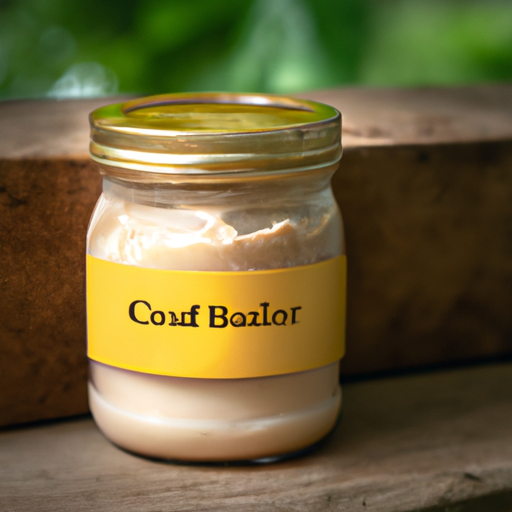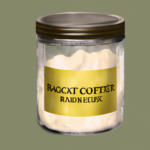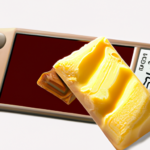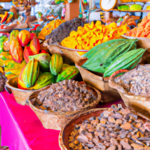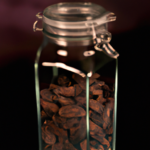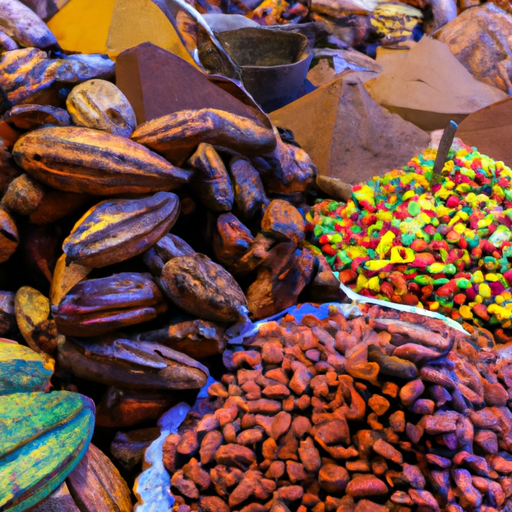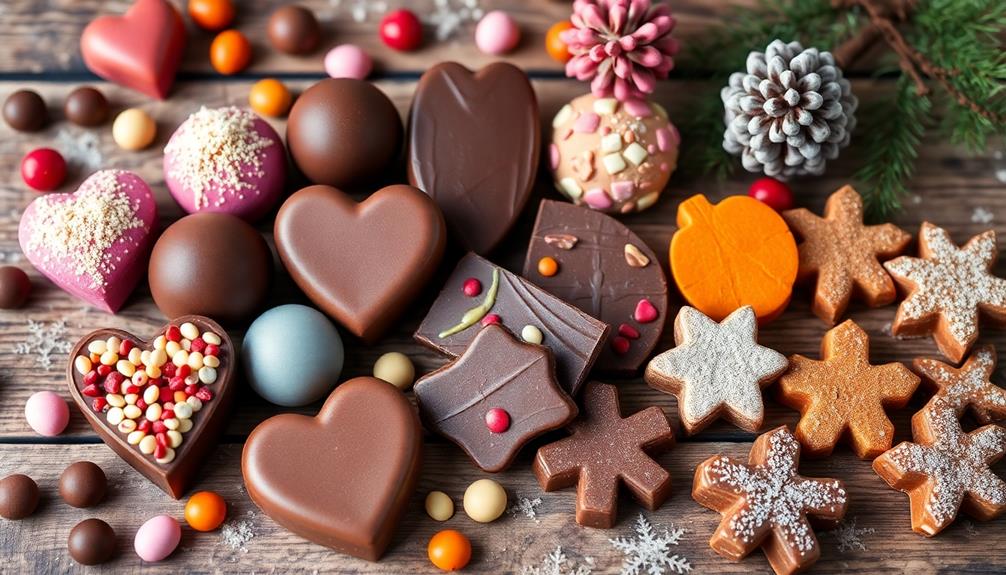As a lover of all things chocolate, I’ve always been fascinated by the magical properties of cacao butter. Its silky texture, rich aroma, and nourishing benefits make it a staple in my pantry and skincare routine. But one question has always lingered in my mind: how long will raw organic cacao butter keep its freshness?
In this article, we will dive deep into the world of cacao butter storage and explore the factors that impact its longevity. We’ll uncover the secrets to extending its shelf life and share tips on how to recognize signs of spoilage.
Whether you’re a culinary enthusiast or a skincare aficionado, this guide will equip you with the knowledge to maximize the lifespan of your cacao butter.
So, grab a cup of hot cocoa and join me on this journey to discover the art of preserving the freshness of raw organic cacao butter. Let’s unlock the secrets to maintaining its quality and harness its benefits in our recipes and skincare rituals.
Key Takeaways
- Raw organic cacao butter can last up to two years if stored properly.
- It is recommended to use raw organic cacao butter within one year for freshness and flavor.
- Storing cacao butter in a cool, dry place and avoiding direct sunlight and high heat can extend its shelf life.
- Raw organic cacao butter is rich in antioxidants and deeply moisturizes dry or damaged skin, making it a versatile ingredient for both recipes and skincare routines.
Understanding the Shelf Life of Raw Organic Cacao Butter
Raw organic cacao butter has a shelf life of up to two years when stored properly. To extend its freshness, it is important to store it in a cool, dark place away from direct sunlight and heat sources. Exposure to light and heat can cause the butter to deteriorate and lose its flavor. It is also crucial to seal the package tightly after each use to prevent moisture and air from entering, which can lead to spoilage. By following these storage techniques, you can maximize the shelf life of raw organic cacao butter and enjoy its exceptional quality for an extended period.
Proper Storage Techniques to Extend Freshness
To extend the freshness of your organic cacao butter, be sure to store it properly and address any concerns about its shelf life. The best storage methods for cacao butter involve keeping it in a cool, dark, and dry place. Avoid exposure to direct sunlight, heat, and moisture, as these can accelerate the deterioration of the butter. Additionally, it is crucial to keep the cacao butter tightly sealed in an airtight container to prevent oxidation and the absorption of odors from other foods. To illustrate the importance of proper storage, consider the following table:
| Storage Method | Shelf Life |
|---|---|
| Room temperature | 1 year |
| Refrigerator | 2 years |
| Freezer | 3 years |
By following these storage techniques, you can maximize the freshness and longevity of your organic cacao butter. Moving forward, let’s explore the factors that impact the longevity of cacao butter.
Factors That Impact the Longevity of Cacao Butter
To ensure the longevity of your cacao butter, you need to be aware of the factors that can impact its freshness. Here are four key factors that affect cacao butter quality:
-
Temperature: Cacao butter is highly sensitive to temperature fluctuations. Exposure to high temperatures can cause the butter to melt and lose its original consistency. It is best to store cacao butter in a cool, dry place, away from direct sunlight.
-
Humidity: Moisture can also impact the quality of cacao butter. Excessive humidity can lead to the formation of mold or mildew, which can spoil the butter. It is crucial to keep cacao butter in an airtight container to prevent moisture absorption.
-
Oxygen Exposure: Oxygen can cause cacao butter to oxidize, resulting in a rancid taste and smell. To minimize oxygen exposure, ensure that the container is tightly sealed and avoid frequent opening.
-
Storage Time: Like any other food product, cacao butter has a limited shelf life. It is essential to check the expiration date and use the butter within the recommended timeframe.
Understanding these factors will help you maintain the quality of your cacao butter.
Now, let’s discuss the signs of spoiled cacao butter to watch out for.
Signs of Spoiled Cacao Butter to Watch Out For
Beware of the telltale signs that your cacao butter has gone bad, as they may leave your taste buds cringing and your culinary creations ruined. To prevent spoilage, it is crucial to be aware of the warning signs. Here is a table outlining the signs of spoiled cacao butter and how to prevent it:
| Warning Signs | How to Prevent Spoilage |
|---|---|
| Off odor | Store in a cool, dry place away from sunlight |
| Discoloration | Use airtight containers to protect from moisture |
| Mold growth | Keep away from humidity and moisture |
| Rancid taste | Avoid exposing it to high temperatures |
| Texture changes | Use within the recommended shelf life |
By paying attention to these warning signs and following proper storage practices, you can ensure the longevity of your cacao butter. Now, let’s explore some tips for maximizing its lifespan without compromising its quality and flavor.
Tips for Maximizing the Lifespan of Your Cacao Butter
By implementing these simple tips, you can extend the lifespan of your cacao butter while maintaining its quality and flavor.
Maximizing freshness and preserving quality are key when it comes to making the most of your raw organic cacao butter. To start, always store it in an airtight container to prevent moisture and odors from seeping in.
Additionally, keep it in a cool, dark place away from direct sunlight and heat sources, as these can degrade its quality. It is also important to avoid exposing it to extreme temperature changes, as this can cause the butter to melt and solidify repeatedly, affecting its texture.
Lastly, make sure to use clean utensils when handling the cacao butter to prevent contamination.
By following these guidelines, you can ensure that your cacao butter stays fresh and of high quality for longer.
Now, let’s explore how to store cacao butter in different environments.
How to Store Cacao Butter in Different Environments
For optimal storage in various conditions, you can maintain the quality and flavor of your cacao butter by considering different environments.
Storing cacao butter in a humid climate:
- To prevent the cacao butter from absorbing moisture, store it in an airtight container.
- Place a desiccant packet in the container to absorb any excess moisture.
The impact of temperature on cacao butter storage:
- Keep the cacao butter in a cool, dry place, away from direct sunlight.
- Avoid exposing it to high temperatures as it can cause the butter to melt and lose its texture.
By following these guidelines, you can ensure that your cacao butter remains fresh and usable for a longer period.
Now, let’s explore how packaging and containers can further preserve its freshness.
Using Packaging and Containers to Preserve Freshness
To ensure the preservation of freshness, you can utilize suitable packaging and containers for your cacao butter. Packaging innovations have made it easier to store and maintain the quality of organic cacao butter.
Look for packaging that is airtight and opaque, as exposure to air and light can cause the butter to spoil faster. Glass jars or containers with tight-fitting lids are ideal for storing cacao butter, as they provide a protective barrier against moisture and odors.
Additionally, consider alternative storage methods such as vacuum-sealed bags or freezer-safe containers to extend the shelf life of your cacao butter. These methods help prevent oxidation and maintain the butter’s rich flavor and aroma.
By using proper packaging and containers, you can ensure that your cacao butter stays fresh for longer, allowing you to fully enjoy its benefits in recipes and skincare routines.
The Benefits of Using Fresh Cacao Butter in Recipes and Skincare
Using proper packaging and containers is crucial for preserving the freshness of raw organic cacao butter. But why is it so important to keep it fresh? Well, let me tell you about the benefits of using fresh cacao butter in both recipes and skincare.
When it comes to homemade chocolate, incorporating cacao butter adds a rich, creamy texture and enhances the flavor. It also helps to create a smooth and glossy finish.
In natural skincare products, cacao butter is a powerhouse ingredient. Its high antioxidant content helps to combat free radicals and protect the skin from environmental damage. Cacao butter is also deeply moisturizing, making it ideal for dry or damaged skin.
Now that you understand the incredible benefits of using fresh cacao butter, let’s move on to some frequently asked questions about cacao butter storage and shelf life.
Frequently Asked Questions About Cacao Butter Storage and Shelf Life
Preserving the freshness of cacao butter is essential, so let’s delve into some frequently asked questions about how to store and maintain its shelf life.
Here are three crucial points to consider when storing raw organic cacao butter:
-
Temperature: Store cacao butter in a cool, dry place between 60-70°F (15-21°C). Avoid exposure to direct sunlight or high heat, as it can cause the butter to melt and lose its quality.
-
Packaging: Keep cacao butter in an airtight container or resealable bag to prevent moisture and air from affecting its flavor and texture. Ensure that the packaging is free from any odors that could be absorbed by the butter.
-
Shelf Life: Raw organic cacao butter can typically last up to two years if stored properly. However, for optimal freshness and flavor, it is recommended to use it within one year.
By following these storage guidelines, you can prolong the shelf life of cacao butter and enjoy its benefits in various cacao butter recipes and skincare routines.
Frequently Asked Questions
Can raw organic cacao butter be stored in the refrigerator?
Yes, raw organic cacao butter can be stored in the refrigerator for optimal freshness. However, it can also be stored in the pantry if properly sealed in an airtight container to prevent moisture and odor absorption.
How long does raw organic cacao butter last after its expiration date?
After its expiration date, raw organic cacao butter may lose its quality and effectiveness. To ensure proper storage, keep it in a cool, dry place away from sunlight. Using raw organic cacao butter in skincare routines can provide numerous benefits.
Can I still use cacao butter if it has developed a white film on its surface?
Yes, you can still use cacao butter if it has developed a white film on its surface. The film is called blooming and does not affect the benefits of cacao butter for hair or using it in a skincare routine.
Is it necessary to keep cacao butter in an airtight container?
Keeping cacao butter in an airtight container is essential for proper storage. It helps preserve its freshness and prevents it from absorbing odors. The shelf life of cacao butter varies depending on storage conditions, such as temperature and exposure to light.
Can cacao butter go bad if it is exposed to sunlight?
Exposing cacao butter to sunlight can have a negative effect on its quality. Heat can cause the butter to melt, leading to a change in texture and potentially affecting its nutritional value.
Is Raw Organic Cacao Butter the Same as Raw Cacao Butter in Terms of Shelf Life?
Yes, raw organic cacao butter and raw cacao butter have the same shelf life. Both versions can last up to 2-4 years if stored properly in a cool, dark place. It’s essential to protect them from moisture and heat to maintain their quality.
Conclusion
In conclusion, understanding the shelf life of raw organic cacao butter is essential for maintaining its freshness and quality. By properly storing it in the right environment, using suitable packaging and containers, and being aware of signs of spoilage, you can maximize its lifespan.
While it is commonly believed that cacao butter can last for up to two years, further research suggests that its quality may start to deteriorate after one year. This theory adds depth and complexity to the topic, emphasizing the importance of using fresh cacao butter in recipes and skincare for optimal results.

